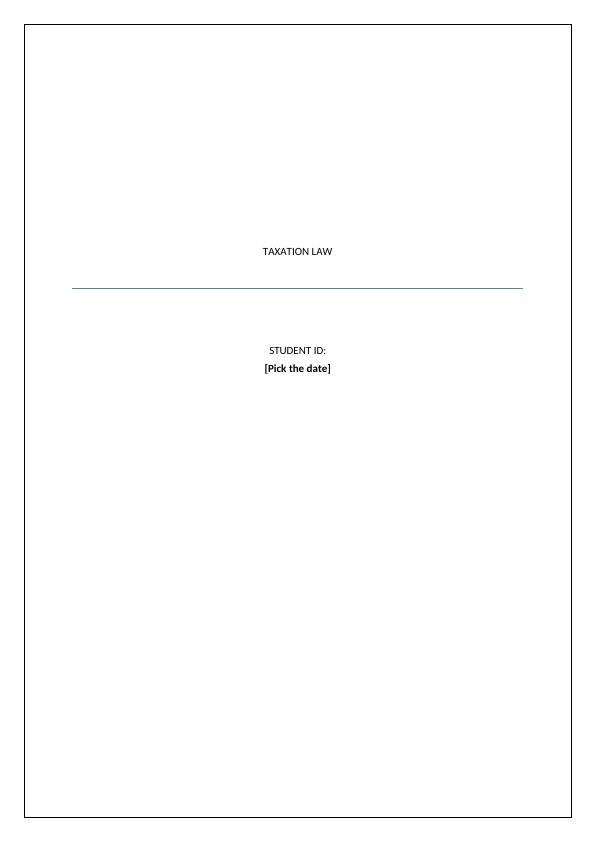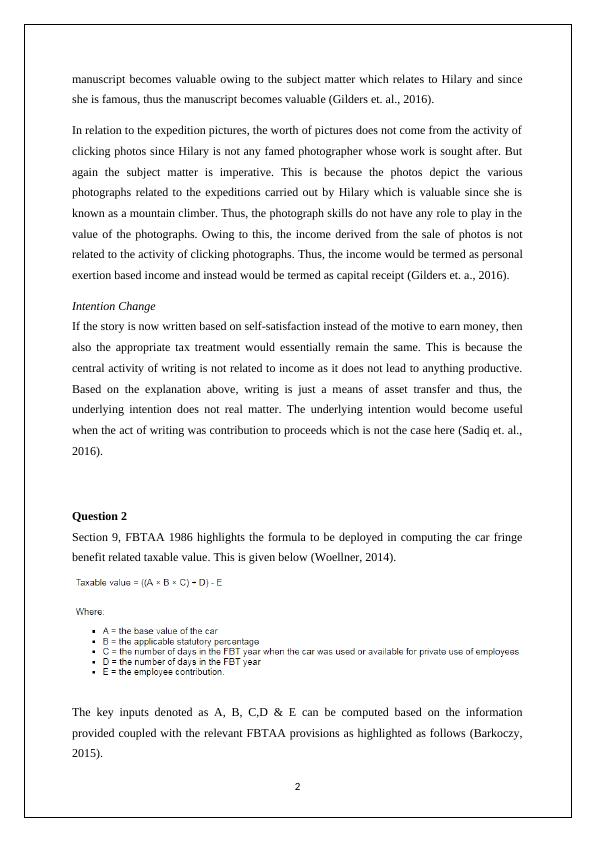Taxation Law: Income Assessment, Car Fringe Benefit, Loan Tax Treatment, Capital Gains Tax
Added on 2023-06-11
8 Pages2345 Words193 Views
End of preview
Want to access all the pages? Upload your documents or become a member.
Taxation Law: Personal Exertion Income, Car Fringe Benefit, Capital Gains Tax, and Gift Tax
|7
|1900
|277
Assignment - Taxation Law (Solution)
|7
|1892
|87
Analysis of Payments under Taxation Law
|8
|2342
|172
Taxation Law: Payments from personal exertion, car fringe benefit, financial assistance, and CGT computation
|7
|1916
|196
Taxation Law: Determination of Tax Outcomes for Personal Services and Interest Income
|9
|1627
|95
Taxation Law: Personal Service Income and Capital Gains Assets
|8
|1375
|335



